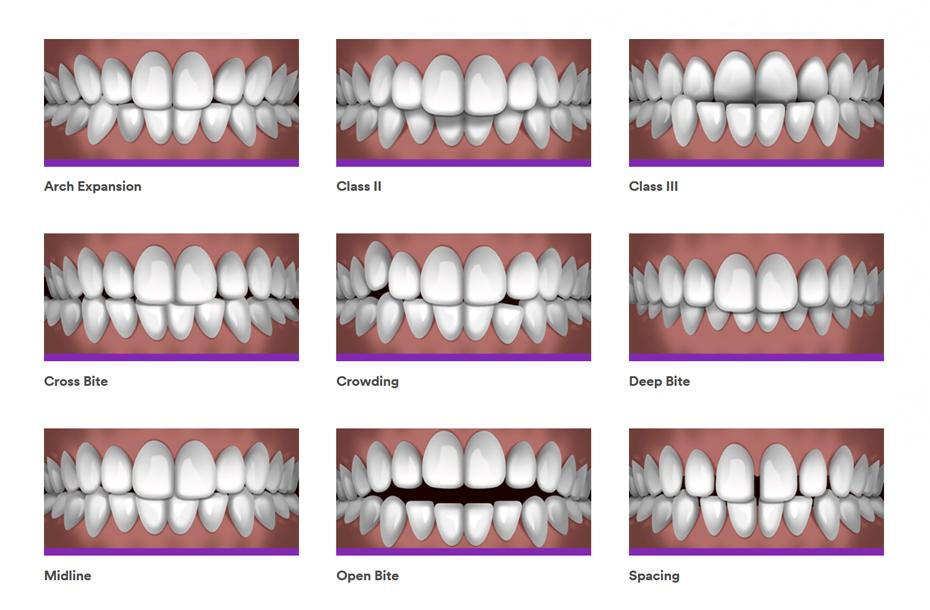The 9-Minute Rule for Causey Orthodontics
Table of ContentsThe Single Strategy To Use For Causey OrthodonticsThe smart Trick of Causey Orthodontics That Nobody is DiscussingThe Single Strategy To Use For Causey OrthodonticsCausey Orthodontics Fundamentals ExplainedOur Causey Orthodontics Statements
Overlooking occlusal partnerships, it was regular to eliminate teeth for a selection of dental concerns, such as malalignment or congestion. The idea of an undamaged dentition was not commonly appreciated in those days, making bite relationships seem unnecessary. In the late 1800s, the idea of occlusion was vital for developing trustworthy prosthetic replacement teeth.As these principles of prosthetic occlusion advanced, it came to be a very useful device for dental care. It remained in 1890 that the job and impact of Dr. Edwards H. Angle started to be felt, with his payment to contemporary orthodontics particularly significant. Focused on prosthodontics, he showed in Pennsylvania and Minnesota before routing his focus in the direction of oral occlusion and the therapies required to preserve it as a normal problem, thus ending up being recognized as the "papa of modern orthodontics".

The concept of optimal occlusion, as proposed by Angle and included right into a category system, enabled a change in the direction of dealing with malocclusion, which is any type of inconsistency from regular occlusion. Having a complete set of teeth on both arcs was very demanded in orthodontic treatment due to the requirement for precise relationships in between them.
A Biased View of Causey Orthodontics
As occlusion became the crucial concern, face percentages and aesthetics were disregarded - affordable orthodontist near me. To accomplish optimal occlusals without using outside pressures, Angle postulated that having ideal occlusion was the most effective method to obtain optimum facial aesthetic appeals. With the passing of time, it ended up being fairly evident that even an extraordinary occlusion was not ideal when considered from an aesthetic perspective
Charles Tweed in America and Raymond Begg in Australia (that both studied under Angle) re-introduced dentistry extraction right into orthodontics throughout the 1940s and 1950s so they can boost face esthetics while additionally making sure far better security worrying occlusal connections. In the postwar period, cephalometric radiography started to be made use of by orthodontists for measuring changes in tooth and jaw position brought on by growth and treatment. It became evident that orthodontic treatment can change mandibular development, leading to the development of practical jaw orthopedics in Europe and extraoral force steps in the US. These days, both useful devices and extraoral tools are used around the globe with the aim of changing development patterns and types. As a result, pursuing real, or at the very least boosted, jaw relationships had actually ended up being the main purpose of therapy by the mid-20th century.
Causey Orthodontics for Beginners
 Till the mid-1970s, braces were made by covering metal around each tooth. https://www.pexels.com/@causey-orthodontics-1624285234/., it became possible to instead bond steel braces to the teeth.
Till the mid-1970s, braces were made by covering metal around each tooth. https://www.pexels.com/@causey-orthodontics-1624285234/., it became possible to instead bond steel braces to the teeth.Andrews gave an insightful meaning of the ideal occlusion in long-term teeth. This has actually had meaningful impacts on orthodontic treatments that are provided consistently, and these are: 1. Right interarchal relationships 2. Correct crown angulation (suggestion) 3. Appropriate crown inclination (torque) 4. No rotations 5. Tight get in touch with factors 6. Apartment Curve of Spee (0.02.5 mm), and based upon these principles, he found a treatment system called the straight-wire device system, or the pre-adjusted edgewise system.
The benefit of the layout depends on its bracket and archwire combination, which requires only very little cord bending from the orthodontist or clinician (emergency orthodontist near me). It's appropriately named after this attribute: the angle of the port and density of the bracket base inevitably determine where each tooth is positioned with little demand for added control
The 5-Minute Rule for Causey Orthodontics
Both of these systems employed the same brackets for each tooth and required the bending of an archwire in three aircrafts for finding teeth in their preferred placements, with these bends dictating best placements. When it involves orthodontic home appliances, they are split into 2 types: detachable and dealt with. Detachable devices can be taken on and off by the person as required.

Thus, almost all modern-day set home appliances can be considered variants on this edgewise home appliance system. Early 20th-century orthodontist Edward Angle made a major payment to the world of dental care. He produced four distinctive home appliance systems that have been made use of as the basis for lots of orthodontic treatments today, preventing a few exemptions.
Causey Orthodontics for Beginners

The wire finished in a thread, and to move it forward, a flexible nut was utilized, which enabled an increase in circumference. By ligation, each specific tooth was connected to this extensive archwire (emergency orthodontist near me). Due to its minimal variety of motion, Angle was incapable to accomplish accurate tooth placing with an E-arch
These tubes held a soldered pin, which could be repositioned at each appointment in order to move them in position. Referred to as the "bone-growing device", this gizmo was theorized to urge healthier bone development because of its potential for moving pressure straight to the roots. Applying it showed frustrating in truth.